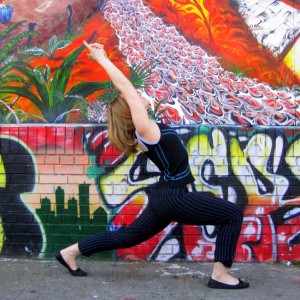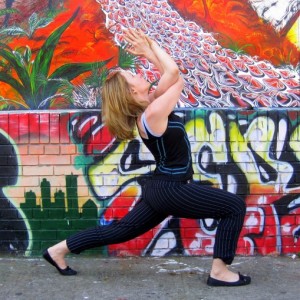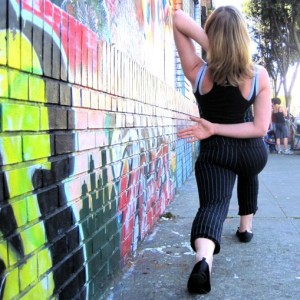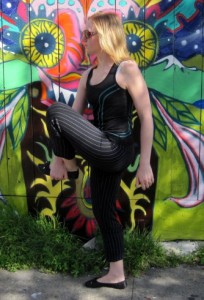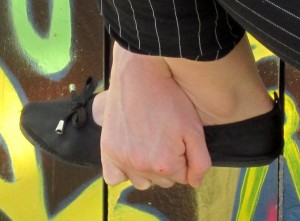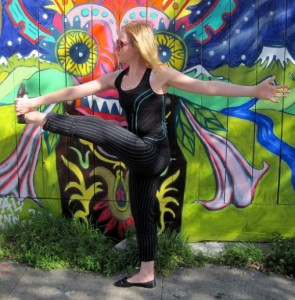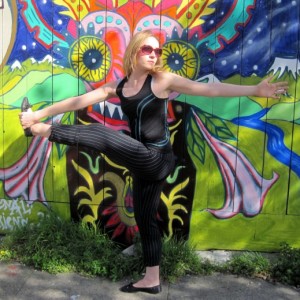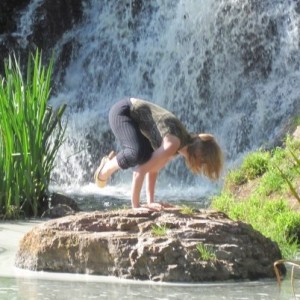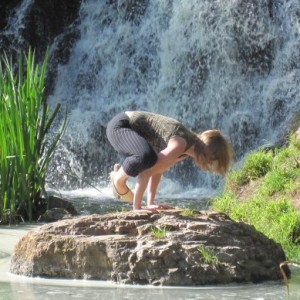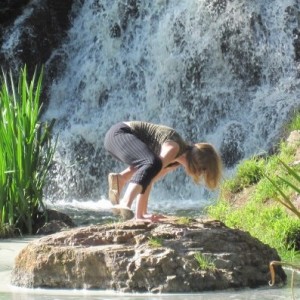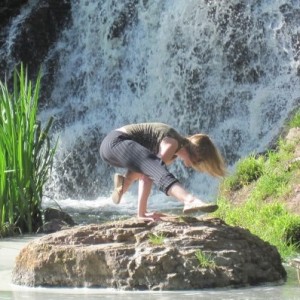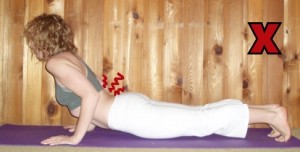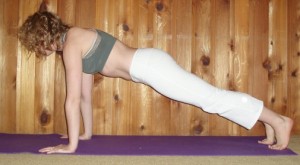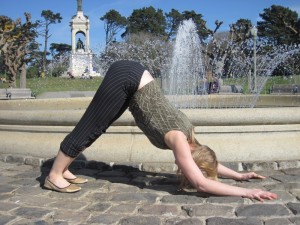The typical arm position for a crescent lunge is arms extended upwards, shoulder width apart, with the palms facing each other. Changing up the arms up arms targets different muscles and make your practice more interesting.
For your base in crescent lunge, make sure the front knee bends so that it points in the same direction as the second toe. Keep the knee above the ankle (you may need to adjust the length of your stance to achieve this). The back toes are tucked under, and the back knee can be either on the floor or lifted. Find length up through the spine, and contract the core muscles (low abs, low back, and pelvic floor). If you are strong and flexible, you may add a backbend. Make sure you don’t collapse into the low back; imagine bending backwards over a big inflatable exercise ball. From here you can try a number of arm variations:
1. Instead of keeping the arms shoulders’ width apart, press the palms together, interlace all ten fingers, then release the index to point upwards. The arm variation promotes shoulder flexibility, and gently stretches some of the upper back muscles.
2. Find eagle arms. To do this, give yourself a big hug, walking the hands as far back as possible. If you can’t get the hands far enough back to stack one elbow on top of the other, stay here, you’ll get a nice upper back stretch. If you’re going farther, keep the elbow where they are, and bring the backs of the hands toward each other. If you have the flexibility, your hands are actually going to pass by one another, with the bottom hand closer to your face. Feel free to stop and hold the position at any point along the way. Finally, if you can, bring the palms of the hands together, forming a “twisted prayer” with the arms. To deepen into eagle arms, extend the hands forward and the elbows upward. You will feel a stretch in the shoulders and across the upper back.
An interesting transition into this one is to start in eagle, then unwind the top leg to step straight back into crescent lunge. From crescent lunge with eagle arms, you could transition straight into warrior three with eagle arms.
3. This one stretches a little more into the chest. Place the hand on the same side as the back leg on the back of your neck, opening the elbow backwards. Take the opposite forearm across the low back with the palm facing away from your body. This is a nice gentle stretch for the chest and shoulder muscles, and also gets into the upper back a little bit. This position also provides a more support for people with weaker core muscles.
Make sure that whatever you do on one side, you balance out on the other side.
